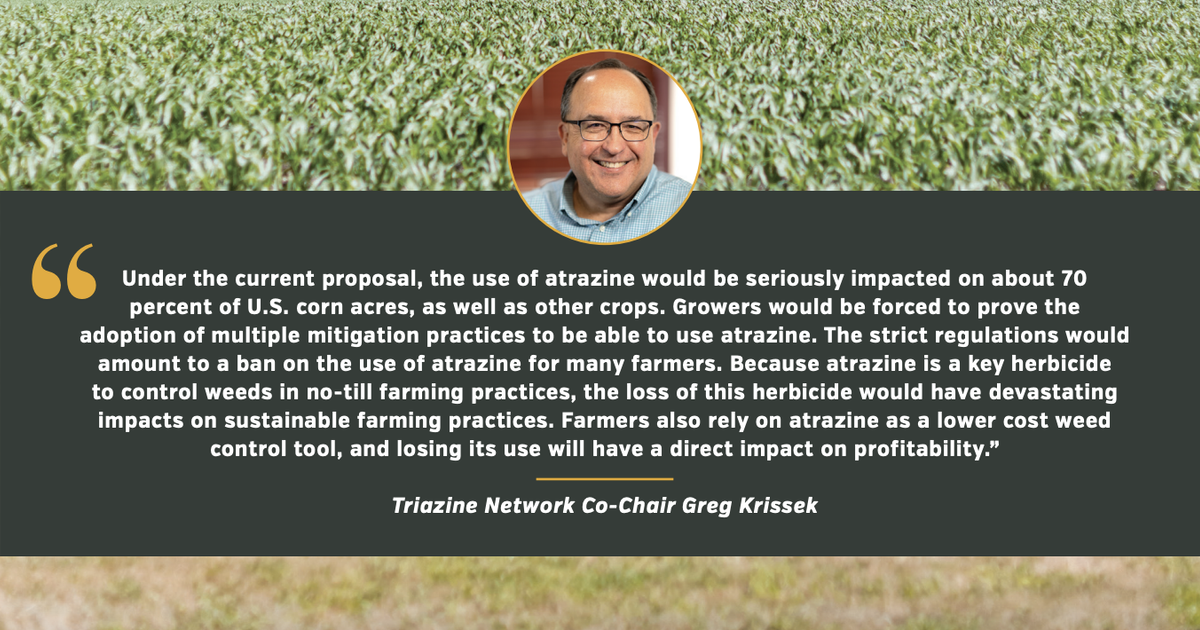EPA Atrazine Proposal

When the Environmental Protection Agency (EPA) proposed an increase in the atrazine aquatic level of concern (CE-LOC) in early July, it seemed that growers had reason to celebrate. Previously, levels were ultra-low at 3.4 parts per billion (ppb) level, which were increased nearly three times higher to 9.7 ppb. This announcement came on the heels of a Scientific Advisory Panel (SAP) for atrazine held last August, which was requested by the Triazine Network, an alliance of grower organizations including the South Dakota Corn Growers Association.
However, while the CE-LOC did increase, the mitigation maps of impacted areas only minimally changed. According to Triazine Network Co-Chair Greg Krissek, “In its June update, EPA more than tripled the CE-LOC for atrazine, however, the area of farmland that will require mitigation is basically unchanged. This is because the EPA continues to use the Watershed Regressions for Pesticides for multiple pesticides (WARP-MP) model for its mitigation maps, which is not suitable for predicting atrazine concentrations. The model is useful for predicting runoff in watersheds but was not designed to accurately predict atrazine concentrations in watersheds.” He continues, “To make matters worse, EPA continues to rely on the upper 95% prediction interval concentrations, rather than mean concentrations, from the WARP-MP model to determine which watersheds potentially have atrazine concentrations exceeding the CE-LOC. This results in atrazine concentrations being dramatically overestimated compared to actual water sampling data from an EPA-required program.”
In addition to flawed studies, the EPA also took a one-size fits all approach for all ag land which doesn’t account for variable topography and climate. Krissek states, “The mitigation maps generated through WARP-MP continue to identify areas of CE-LOC exceedances in areas where runoff to streams is highly unlikely or nearly impossible. For example, areas in the Great Plains are flat with a semi-arid climate with few if any streams with running water (let alone any aquatic life). The WARP-MP model predicts many of these areas to exceed the 9.7 parts per billion CE-LOC. Growers in these flat, dry areas would be required to use mitigation practices from the picklist (like contour farming on flat land) that are impractical and have no tangible benefit because of the lack of aquatic plant communities.”
Grassroots efforts, which have been proven to help shape policy in the past, remain a critical factor today in situations like this. Krissek asserts, “The voice of the grower is vital in efforts to protect inputs like atrazine from overregulation based on poor scientific evidence. Growers can best explain how they use the herbicides as well as the economic and environmental impacts of losing access to herbicides like atrazine. Comments from real farmers has been very effective in the past.”
According to Triazine Network Co-Chair Greg Krissek
“Under the current proposal, the use of atrazine would be seriously impacted on about 70 percent of U.S. corn acres, as well as other crops. Growers would be forced to prove the adoption of multiple mitigation practices to be able to use atrazine. The strict regulations would amount to a ban on the use of atrazine for many farmers. Because atrazine is a key herbicide to control weeds in no-till farming practices, the loss of this herbicide would have devastating impacts on sustainable farming practices. Farmers also rely on atrazine as a lower cost weed control tool, and losing its use will have a direct impact on profitability.”
